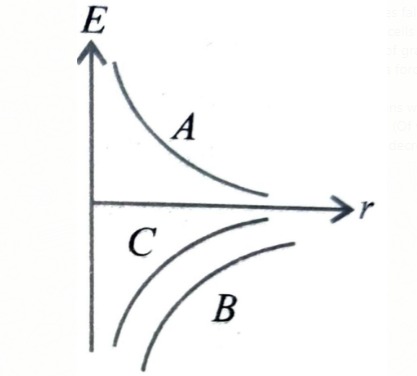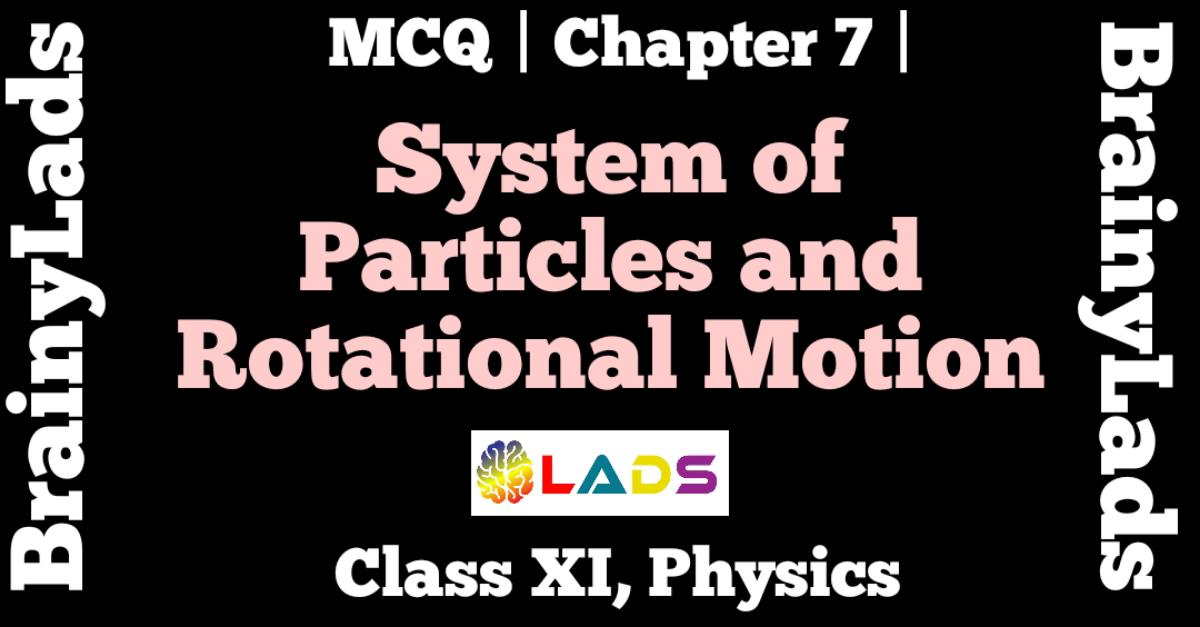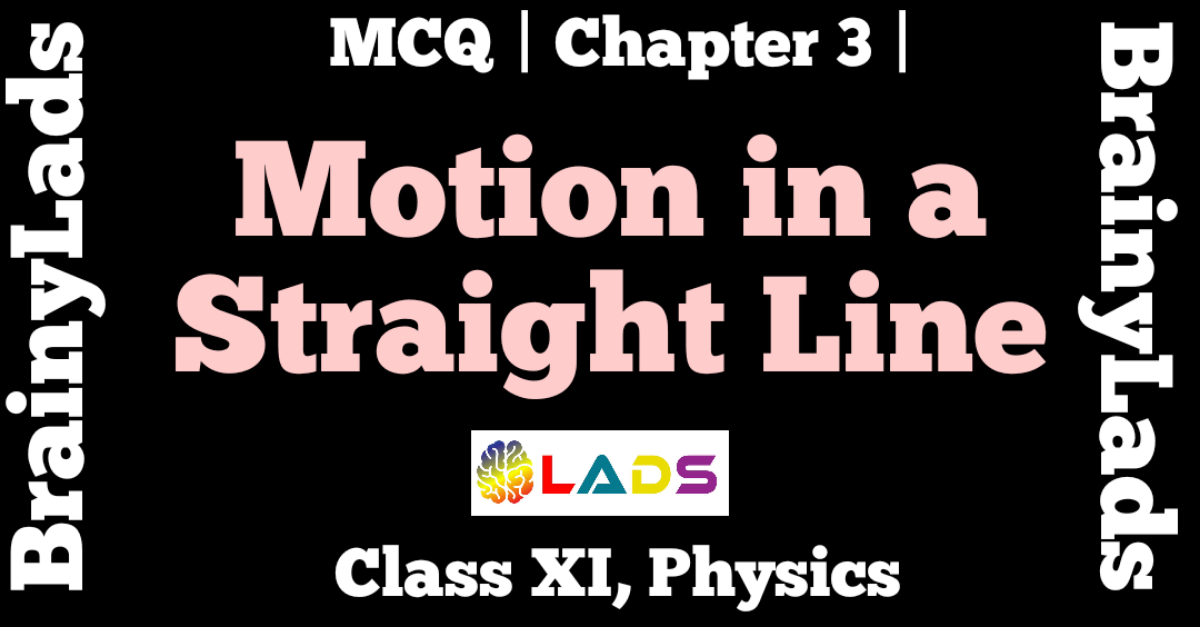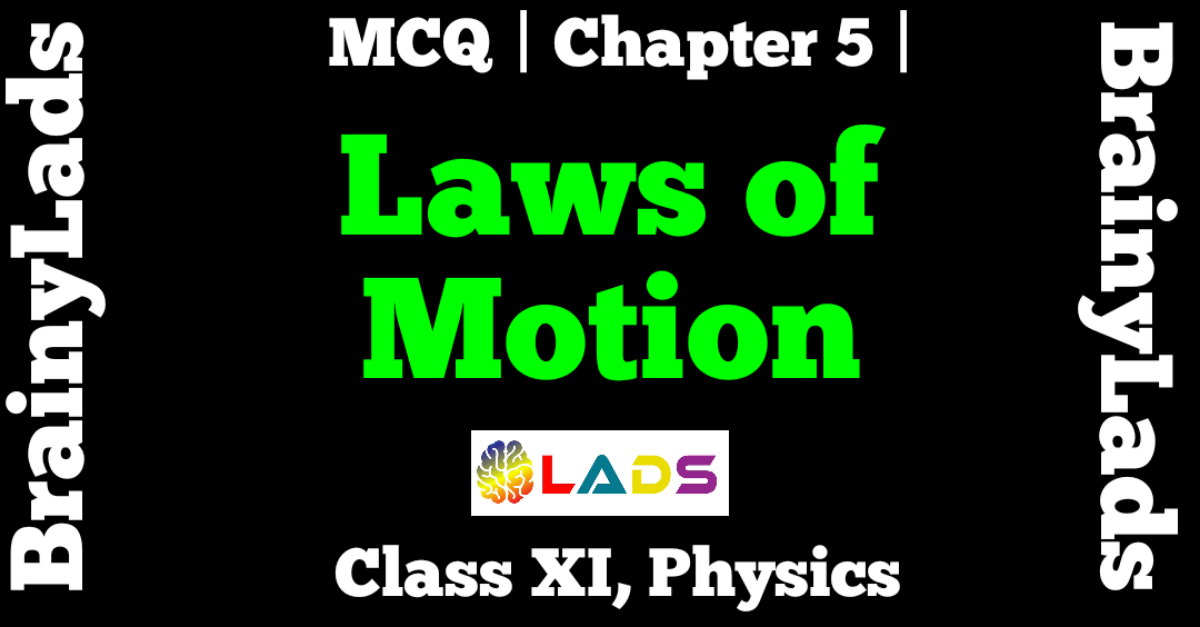MCQ of Gravitation | Chapter 8 | Physics | Class 11 | CBSE |
MCQ of Gravitation, Chapter 8, Class 11, Physics
Question 1: Kepler’s second law is a consequence of
- Conservation of energy
- Conservation of linear momentum
- Conservation of angular momentum
- Conservation of mass
Answer: C (Conservation of linear momentum)
Question 2: Which of the following Kepler’s law is also known as harmonic law?
- First law
- Second law
- Third law
- None of these
Answer: C (Third law)
Question 3: Which of the following statements is correct regarding the gravitational force?
- The gravitational force is dependent on the intervening medium
- The gravitational force is a non conservative force
- The gravitational force forms action reaction pair
- The gravitational force is a non Central force
Answer: C (The gravitational force forms action reaction pair)
Question 4: Two spheres of masses m and M are situated in air and the gravitational force between them is F. The space around the masses is now filled with a liquid of specific gravity 3. The gravitational force will now be
- 3 F
- F
- F / 3
- F / 9
Answer: B (F)
Question 5: A point mass m is placed inside a spherical shell of radius R and mass M at a distance R / 2 from the centre of the shell. The gravitational force exerted by the shell on the point mass is
- G M m / R2
- 2 G M m / R2
- Zero
- 4 G M m / R2
Answer: C (Zero)
Question 6: Two point masses A and B having masses in the ratio 4 : 3 are separated by a distance of 1 m. When another point mass C of mass M is placed in between A and B, the force between A and C is (1 /3)rd of the force between B and C. Then the distance of C from A is
- 2/3 m
- 1/3 m
- 1/4 m
- 2/7 m
Answer: A (2/3 m)
Question 7: The mass of moon is 1% of mass of Earth. The ratio of gravitational pull of Earth on moon and that of moon on earth will be
- 1 : 1
- 1 : 10
- 1 : 100
- 2 : 1
Answer: A (1 : 1)
Question 8: Which of the following statements is correct regarding the universal gravitational constant G?
- G has same value in all systems of units
- The value of G is same everywhere in the universe
- The value of G was first experimentally determined by Johannes Kepler
- G is a vector quantity
Answer: B (The value of G is same everywhere in the universe)
Question 9: Radius of Earth is 6400 km and that of mass is 3200 km. Mass of mass is 0.1 that of Earth’s mass. Then the acceleration due to gravity on Mars is nearly
- 1 m/s2
- 2.5 m/s2
- 4 m/s2
- 5 m/s2
Answer: C (4 m/s2)
Question 10: If the mass of sun were 10 times smaller and gravitational constant G were ten times larger in magnitude, then which one of the following statements is incorrect?
- Walking on ground would become more difficult
- The acceleration due to gravity on earth will not change
- Raindrops will fall much faster
- Airplanes will have to travel much faster
Answer: B (The acceleration due to gravity on earth will not change )
You may also read MCQ of Physical World, MCQ of Units and Measurements, MCQ of Motion in a Straight Line, MCQ of Motion in a Plane, MCQ of Laws of Motion, MCQ of Work, Energy and Power, MCQ of System of Particles and Rotational Motion, for better understanding of the chapters.
Question 11: If ME is is the mass of the Earth and RE its radius , the ratio of the acceleration due to gravity and the gravitational constant is
- RE2 / ME
- ME / RE2
- ME RE2
- ME / RE
Answer: B (ME / RE2)
Question 12: The mass of moon is (1/8) the earth but the gravitational pull is (1/6) of the Earth. It is due to the fact that
- Moon is the satellite of the Earth
- The radius of the Earth is (8/6) of the moon
- The radius of the Earth is (√8/√6) of the moon
- The radius of the moon is (6/8) of the Earth
Answer: C (The radius of the Earth is (√8/√6) of the moon)
Question 13: Value of g is
- Maximum at poles
- Maximum at equator
- Same everywhere
- Minimum at poles
Answer: A (Maximum at poles)
Question 14: Earth is flattened at the poles and bulges at the equator. This is due to the fact that
- The Earth revolves around the sun in an elliptical orbit
- The angular velocity of spinning about its axis is more at the equator
- The centrifugal force is more at the equator than at poles
- None of these
Answer: C (The centrifugal force is more at the equator than at poles)
Question 15: Which of the following statements is correct?
- Acceleration due to gravity increases with increasing altitude
- Acceleration due to gravity increases with increasing depth
- Acceleration due to gravity increases with increasing latitude
- Acceleration due to gravity is independent of the mass of the earth
Answer: C (Acceleration due to gravity increases with increasing latitude)
Question 16: A body weighs 250 N on the surface of the Earth. How much will it way half way down to the centre of the earth?
- 125 N
- 150 N
- 175 N
- 250 N
Answer: A (125 N)
Question 17: A body weighs 72 N on the surface of the earth. What is the gravitational force on it due to the earth at a height equal to half the radius of the earth?
- 16 N
- 28 N
- 32 N
- 72 N
Answer: C (32 N)
Question 18: A particle of mass M is situated at the centre of a spherical shell of same mass and radius R. The gravitational potential at a point situated at R / 2 distance from the centre will be
- -3 G M / R
- -2 G M / R
- -G M / R
- -4 G M / R
Answer: A (-3 G M / R)
Question 19: A particle of mass m is placed at the centre of a uniform spherical shell of mass 3 m and radius R. The gravitational potential on the surface of the shell is
- -G m / R
- -3 G m / R
- -4 G m / R
- -2 G m / R
Answer: C (-4 G m / R)
Question 20: The escape velocity of a body from the Earth depends on
i) The mass of the body
ii) The location from where it is projected
iii) The direction of projection
iv) The height of the location from where the body is launched
- (i) and (ii)
- (ii) and (iv)
- (i) and (iii)
- (iii) and (iv)
Answer: B ( (ii) and (iv) )
Question 21: Which of the following statements is correct regarding satellites?
- A satellite cannot move in a stable orbit in a plane passing through the earth’s centre.
- Geostationary satellites are launched in the equatorial plane
- We can use just one geostationary satellite for global communication around the globe
- The speed of satellite increases with an increase in radius of its orbit
Answer: B (Geostationary satellites are launched in the equatorial plane)
Question 22: The time period of an Earth satellite in a circular orbit of radius R is 2 days and its orbital velocity is vo. If time period of another satellite in a circular orbit is 16 days then
- Its radius of orbit is 4 R and orbital velocity is vo.
- Its radius of orbit is 4 R and orbital velocity is vo / 2
- Its radius of orbit is 2 R and orbital velocity is vo.
- Its radius of orbit is 2 R and orbital velocity is vo / 2
Answer: B (Its radius of orbit is 4 R and orbital velocity is vo / 2)
Question 23: Figure shows the variation of energy E with the orbit radius r of a satellite in circular motion. Choose the correct statement.
- A shows the kinetic energy, B shows the total energy and C the potential energy of the system.
- A and B are kinetic energy and potential energy respectively and C the total energy of the satellite.
- A and B at the potential energy and kinetic energy respectively and C the total energy of the satellite.
- C and A are the kinetic energy and potential energy respectively and B is the total energy of the satellite
Answer: B (A and B are kinetic energy and potential energy respectively and C the total energy of the satellite)
Question 24: Two satellites of Earth S1 and S2 are moving in the same orbit. The mass of S1 is four times the mass of S2. Which one of the following statements is true?
- The potential energies of satellites in the two cases are equal
- S1 and S2 are moving with the same speed.
- The Kinetic energies of the two satellites are equal
- The time period of S1 is four times that of S2.
Answer: B (S1 and S2 are moving with the same speed.)
Question 25: In motion of an object under the gravitational influence of another object which of the following quantities is not conserved?
- Angular momentum
- Mass of an object
- Total mechanical energy
- Linear momentum
Answer: D (Linear momentum)
Question 26: Which of the following statements is correct regarding a geostationary satellite?
- A Geostationary satellite goes around the earth in East West direction
- A geostationary satellite goes around the earth in west east direction
- The time period of geostationary satellite is 48 hours.
- The angle between the equatorial plane and the orbital plane of geostationary satellite is 90°.
Answer: B (A geostationary satellite goes around the earth in west east direction)
Question 27: Which one of the following statements is correct?
- The energy required to rocket an orbiting satellite out of Earth’s gravitational influence is more than that the energy required to project a stationary object at the same height (as the satellite) out of Earth’s influence.
- If potential energy becomes zero at infinity the total energy of an orbiting satellite is negative of potential energy.
- The first artificial satellite Sputnik I was launched in the year 1950.
- The orbital speed of the SYNCOMS (Synchronous communications satellite) is 3.07 × 103 m s-1.
Answer: D (The orbital speed of the SYNCOMS (Synchronous communications satellite) is 3.07 × 103 m s-1)
Question 28: The Earth is an approximate sphere. If the interior contained metal which is not of the same density everywhere, then on the surface of the earth, the acceleration due to gravity
- Will be directed towards the centre but not the same everywhere
- Will have the same value everywhere but not directed towards the centre
- Will have the same value everywhere in magnitude and directed towards the centre
- Cannot be zero at any point
Answer: D (Cannot be zero at any point)
Question 29: Both Earth and moon are subjected to the gravitational force of the Sun. As observed from the sun the orbit of the moon
- Will be elliptical
- Will not be strictly elliptical because the total gravitational force on it is not Central
- Is not elliptical but will necessarily be a closed curve
- Deviates considerably from being elliptical due to influence of planets other than earth
Answer: B (Will not be strictly elliptical because the total gravitational force on it is not Central)
Question 30: Kepler’s third law states that the square of period of revolution (T) of a planet around the sun is proportional to third power of average distance are are between Sun and planet, i.e. T2 = K r3 here K is constant. If the masses of Sun and planet are M and m respectively when as per Newton’s law of gravitation force of attraction between them is F = GMm/ R2 , here G is gravitational constant. The relation between G and K is described as
- K = G
- K = 1 / G
- GK = 4π 2
- G MK = 4π2
Answer: D (G MK = 4π2)
Question 31: Different points in earth are at slightly different distances from the sun and hence experience different forces due to gravitation. For a rigid body, we know that if various forces act at various points in it, the resultant motion is as if a net force acts on the centre of mass causing translation and a net torque at the centre of mass causing rotation around an Axis through the centre of mass. For the Earth Sun system ( approximating the earth as a uniform density sphere)
- The torque is zero
- The torque causes the earth to spin
- The rigid body result is not applicable since the earth is not even approximately a rigid body
- The talk causes the earth to move around the sun
Answer: A (The torque is zero)
Question 32: A body weighs 200 N on the surface of the earth. How much will it way halfway down to the centre of the earth?
- 100 N
- 150 N
- 200 N
- 250 N
Answer: A (100 N)
Question 33: Two satellites A and B have masses m and 2m respectively. A is in a circular orbit of radius R and B is in circular orbit of radius 2R around the earth. The ratio of their Kinetic energies TA / TB is
- 1
- 2
- √1/√2
- 1/2
Answer: A (1)
Question 34: The acceleration due to gravity at a height 1 km above the earth is same as at a depth d below the surface of the earth. Then
- d = 1 km
- d = 3/2 km
- d = 2 km
- d = 1/2 km
Answer: C (d = 2 km)
Question 35: Two satellites S1 and S2 revolve around a planet in coplanar circular orbits in the same sense. Their periods of revolution are 1 hour and 8 hour respectively. The radius of the orbit of S1 is 104 km. When S2 is closest to S1, the speed of S2 relative to S1 (in km/h)
- π × 104
- -π × 104
- π × 105
- -π × 105
Answer: B (-π × 104)
Question 36: Satellites orbiting the earth and finite life and sometimes debris of satellites fall to the earth. This is because,
- The solar cells and batteries in satellites run out
- The laws of gravitation predict a trajectory spiralling inwards.
- Of viscous forces causing the speed of satellite and hence high to gradually decrease
- Of collisions with other satellites
Answer: C (Of viscous forces causing the speed of satellite and hence high to gradually decrease)
Question 37: A satellite is moving with a constant speed v in circular orbit around the earth. An object of mass m is ejected from the satellite such that it just escapes from the gravitational pull of the earth. At the time of ejection, the kinetic energy of the object is
- 1/2 m v2
- 2 m v2
- 3/2 m v2
- m v2
Answer: D ( m v2 )
Do share the post if you liked it. For more updates, keep logging on BrainyLads




